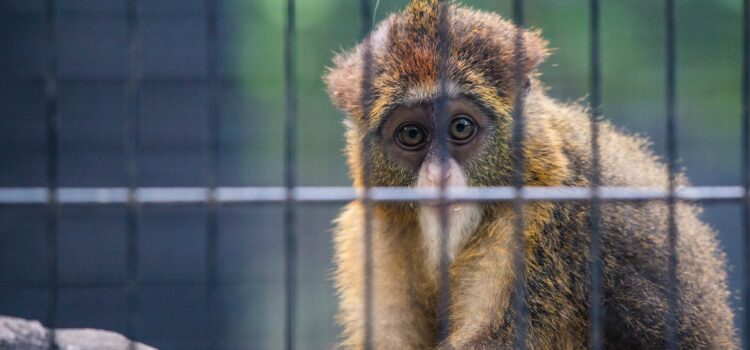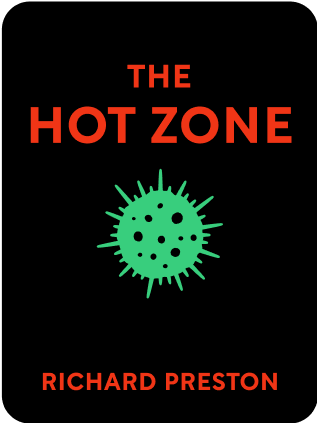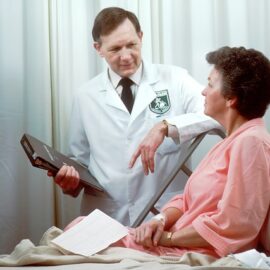

This article is an excerpt from the Shortform summary of "The Hot Zone" by Richard Preston. Shortform has the world's best summaries of books you should be reading.
Like this article? Sign up for a free trial here .
What was the Ebola outbreak of 1989? How did the virus start, and how was it contained?
The Ebola outbreak of 1989 marked the emergence of a new strain of Ebola called Ebola Reston.
Keep reading to find out more about the Ebola outbreak of 1989, and how it was contained.
Ebola Outbreak of 1989: Ebola Appears in the U.S.
In 1989, monkeys in a facility in Reston, Virginia began dying mysteriously. The facility held imported monkeys before sending them elsewhere in the U.S., and it belonged to Hazleton Research Products, a company that imported and sold lab animals. This was the beginning of the Ebola USA 1989 outbreak.
All the dying monkeys arrived in a shipment from a facility in the Philippines. Infected monkeys developed glazed facial expressions, lost their appetites, and died soon after. Within a month, 29 of the 100 monkeys were dead, sparking the Ebola outbreak of 1989
When the company’s veterinarian, Dan Dalgard, dissected the corpses, he found the monkeys’ spleens were swollen and there was blood in their intestines. Seeking a second opinion, Dalgard sent samples from the monkeys to a virologist at the United States Army Medical Research Institute of Infectious Diseases (USAMRIID), which developed vaccines and studied how to contain outbreaks from weaponized or naturally occurring biological threats. But one they didn’t anticipate was the Ebola 1989 USA outbreak.
When researchers at USAMRIID viewed the infected monkey samples under a microscope, they saw the signature rope-like shape of the filovirus family. News quickly spread up the chain of command.
The Army officials had to be extremely cautious to contain the threat of an outbreak while also avoiding a public panic. They worked with CDC officials to develop a plan to stop the Ebola outbreak of 1989.
There are only three ways to stop a virus:
- Vaccines, but none existed for Ebola
- Drug treatments, but none existed for Ebola
- Biocontainment, which would be their only option
With permission from Dalgard and Hazleton, the Army would euthanize every monkey in the monkey house and sterilize the entire facility.
The Army Sterilizes the Monkey House
When they first discovered, the Ebola USA 1989 outbreak, The Army assembled a biohazard SWAT team to tackle the monkey house mission. With the virus on the loose inside the monkey house, they considered the facility a Biosafety Level 4 hot zone—an area contaminated with the most dangerous category of viruses, which have no vaccines or cures.
The team had to wear biosafety space suits that encased their entire bodies and take every safety precaution to prevent the virus from getting out of the building while they dealt with the Ebola 1989 USA outbreak. They dealt with the monkeys in five steps:
- Making the monkeys unconscious with injections of a general anesthetic and a sedative
- Taking a blood sample from the unconscious monkeys
- Euthanizing the monkeys
- Collecting samples of the monkeys’ livers and spleens
- Bagging the corpses and placing them in biohazard containers
It took a few days for the biohazard SWAT team to euthanize all 450 monkeys. Then the decontamination team scrubbed every surface of the facility with bleach and gassed the building with formaldehyde, in hopes of stopping the Ebola outbreak of 1989.
The Virus Returns
After the Army was confident that the building was sterile, they returned it to Hazleton. The company resumed importing monkeys from the same supplier in the Philippines, and, within a month, the Reston facility saw the virus return, continuing the Ebola USA 1989 outbreak.
During the second outbreak, an employee at the monkey house cut himself while performing a necropsy on an infected monkey. The scalpel was covered in virus-laden monkey blood, and it cut into his thumb and mixed with his own blood. He was surely infected, and believed the 1989 Ebola outbreak would only get worse.
But, as time passed, the employee appeared to be fine.
In fact, all four animal caretakers from the Reston facility tested positive for the virus during the Ebola outbreak of 1989, but none ever broke with symptoms.
Since the virus didn’t appear to affect people, the Army, CDC, and Hazleton agreed to isolate the monkeys inside the building and let the virus work through them—instead of bringing the Army back in for another sterilization mission.
Based on how the virus was moving through the monkey house and affecting the monkeys, the virus seemed to have mutated since the month prior, indicating it could to quickly adapt to new hosts and survive significant changes in its environment.
The Monkey House Virus Is Novel
USAMRIID researchers determined that this virus was a new form of Ebola. They named it Reston.
This virus was so similar to Ebola Zaire that it was hard to distinguish them in microscopic images. But two things were significantly different about Ebola Reston in the 1989 Ebola outbreak.
First, Ebola Reston appeared to be airborne. While the virus spread through the monkey house, it infected monkeys in different rooms that never interacted. Additionally, two of the Reston employees who tested positive hadn’t been exposed through any cuts or blood contact, so they must have contracted the virus through the air.
Second, unlike the other filoviruses, Ebola Reston didn’t appear to affect people during the Ebola 1989 outbreak.
Still, researchers remained cautious. Considering how quickly the virus appeared to adapt, they couldn’t eliminate the possibility that one small mutation could make Ebola Reston lethal to humans—and its airborne transmission would make the threat even deadlier. The Ebola 1989 outbreak was a major public health scare.
Did researchers fear a large-scale outbreak? On one hand, the close contact required for transmission and the relatively successful containment of filoviruses relieved some fear of a major epidemic or pandemic. On the other hand, all the questions that still remained about the filoviruses—including their hosts, where they originate, and how and why they emerge—amplified the fear of future outbreaks after the 1989 Ebola outbreak.
(Shortform note: Since the book’s publication in 1995, there have been Ebola outbreaks every few years, the majority of which have been Ebola Zaire. Most have been fairly small (less than 100 cases) and centered in Western Africa, but one was a far outlier: From 2013-2016, Ebola Zaire spread across 10 countries, infecting more than 28,000 people and killing more than 11,000.)
The Ebola 1989 outbreak was contained, but caused concern about the virus and how it could spread and adapt to effect humans. In the end, the Ebola 1989 USA outbreak was contained and controlled.

———End of Preview———
Like what you just read? Read the rest of the world's best summary of Richard Preston's "The Hot Zone" at Shortform .
Here's what you'll find in our full The Hot Zone summary :
- The many different strains of Ebola, including the deadliest kind with a kill rate of 90%
- How scientists unraveled the mystery of a new strain of Ebola
- How Ebola could become airborne, becoming one of the deadliest viruses known






